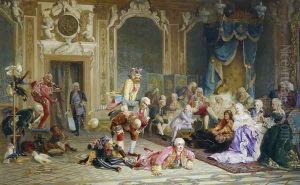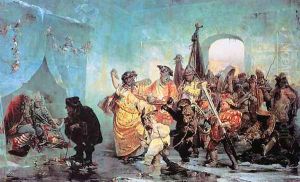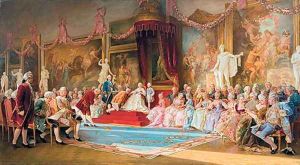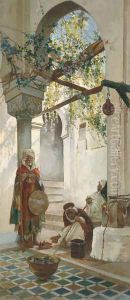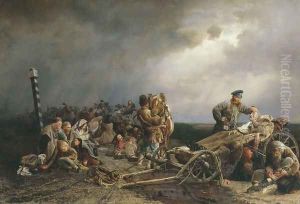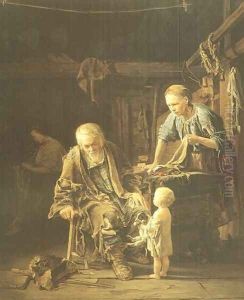Valery Ivanovich Jacobi Paintings
Valery Ivanovich Jacobi was a distinguished Russian painter born on May 20, 1834, in St. Petersburg, Russia. Coming from a background that had no direct ties to the artistic professions, Jacobi nonetheless emerged as one of the most prominent figures in Russian art of the 19th century. His education in art began at the Imperial Academy of Arts in St. Petersburg, where he honed his skills and developed a style that would later become celebrated for its depth and narrative richness.
Jacobi's oeuvre is characterized by its focus on historical and genre scenes, often imbued with a sense of dramatic intensity and emotional depth. His paintings are notable for their meticulous attention to detail, vibrant color palette, and the ability to evoke the spirit of the era he depicted. Among his most famous works are scenes from Russian history and folklore, which not only showcase his technical prowess but also reflect his interest in the nation's past and cultural heritage.
Throughout his career, Jacobi received numerous accolades and was highly regarded by both the public and his peers. He was a respected member of the Imperial Academy of Arts and contributed significantly to the Russian art scene of his time. Despite the acclaim, he led a life marked by personal challenges and the political upheavals that characterized Russia in the late 19th century. These experiences, however, did not hinder his artistic output but rather enriched the depth and complexity of his work.
Valery Ivanovich Jacobi's legacy is that of a master storyteller through the medium of paint, who captured the essence of Russian culture and history. His works continue to be celebrated for their artistic merit and historical significance. Jacobi passed away on April 27, 1902, in St. Petersburg, leaving behind a body of work that remains influential in the study of 19th-century Russian art.
